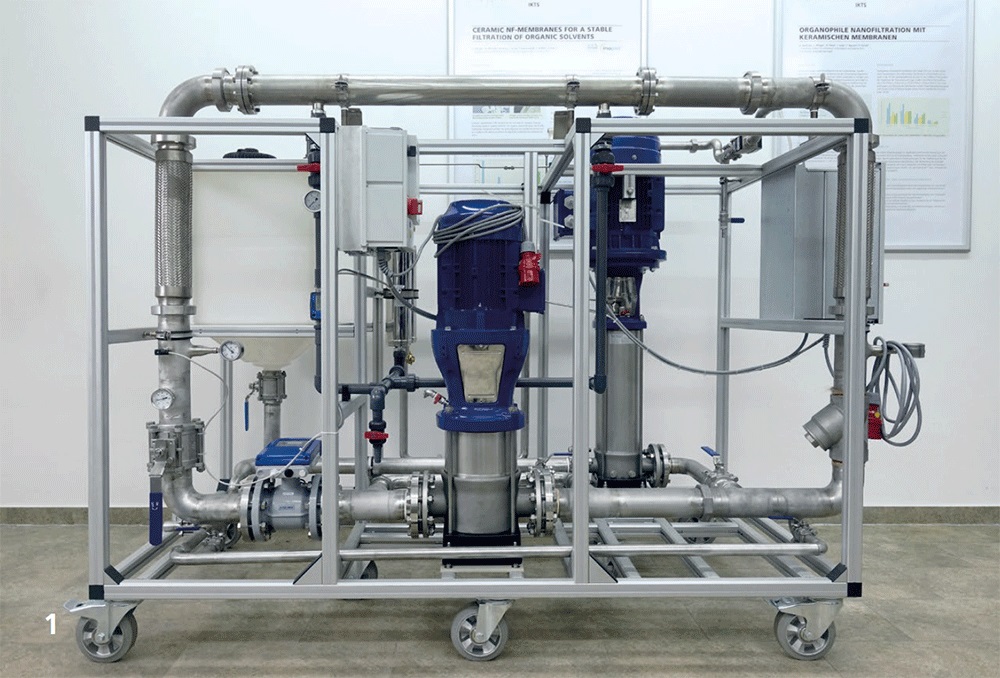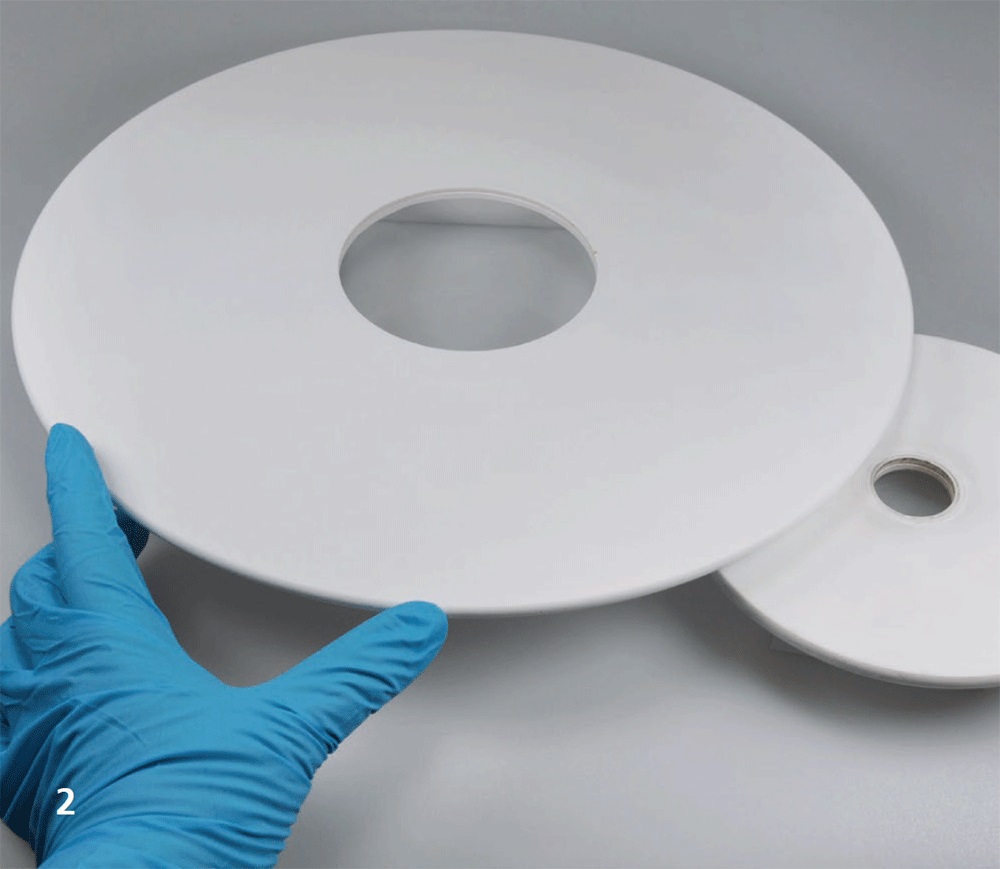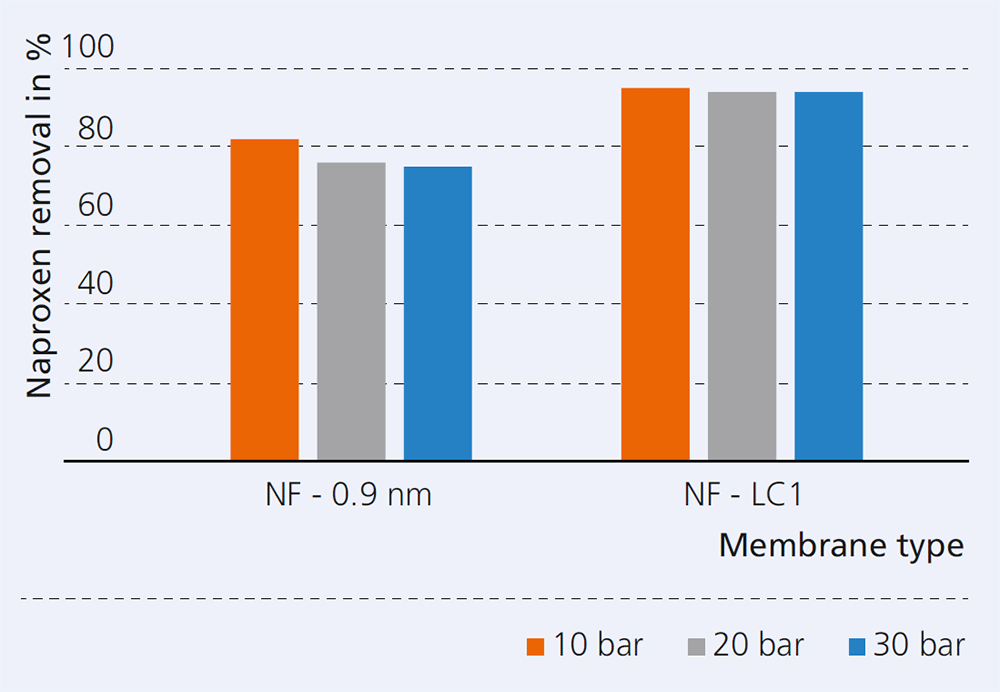


The reduction of micropollutants in water bodies is an important objective of water management and component of environmental policy. The joint project “Development of a process for the elimination of pharmaceuticals and other organic trace substances from wastewater using a combined system consisting of functionalized ceramic nanofiltration membranes and extended oxidation – PharMem” addresses the goal of developing a new treatment process for the separation of pharmaceuticals from polluted wastewater. The partners in this Thuringian project are E.S.C.H. GmbH, Rauschert Kloster Veilsdorf GmbH, Friedrich-Schiller-University Jena and Fraunhofer IKTS. The process consists of a nanofiltration step leading to extensive water purification and the downstream degradation of the remaining trace substances in the permeate by an oxidative process. The basis for the membrane separation step are ceramic nanofiltration membranes with a cut-off in the range of 200 g/mol (NF–LC1) or 450 D (NF–0.9 nm), which is
unique worldwide. This means that molecules with equal or higher molecular weight are retained by the membrane under ideal conditions. Many pharmaceutical substances have a molecular weight between 200 g/mol and 500 g/mol and can therefore be retained by a nanofiltration membrane. In the PharMem collaborative project, membrane synthesis is transferred to multi-channel tubes with increased specific membrane area and to rotating disk filters. Nanofiltration membrane layers on rotating disk filters are a world first. Membrane systems with rotating disk filters are very energy-efficient because the energy required to rotate the disk filters is lower than the pump energy required to operate cross-flow filtration systems. The membrane separation and the downstream oxidation process are combined in a filtration system, tested and evaluated under real conditions. A retention of up to 95 % for the analgesic naproxen (diagram) and the beta-blocker Propranolol has already been achieved by the nanofiltration step. The combined
process can thus achieve almost complete elimination of trace substances.
The authors gratefully acknowledge the financial support of the Free State of Thuringia for the project PharMem (grant number 2018 VF 0014).
